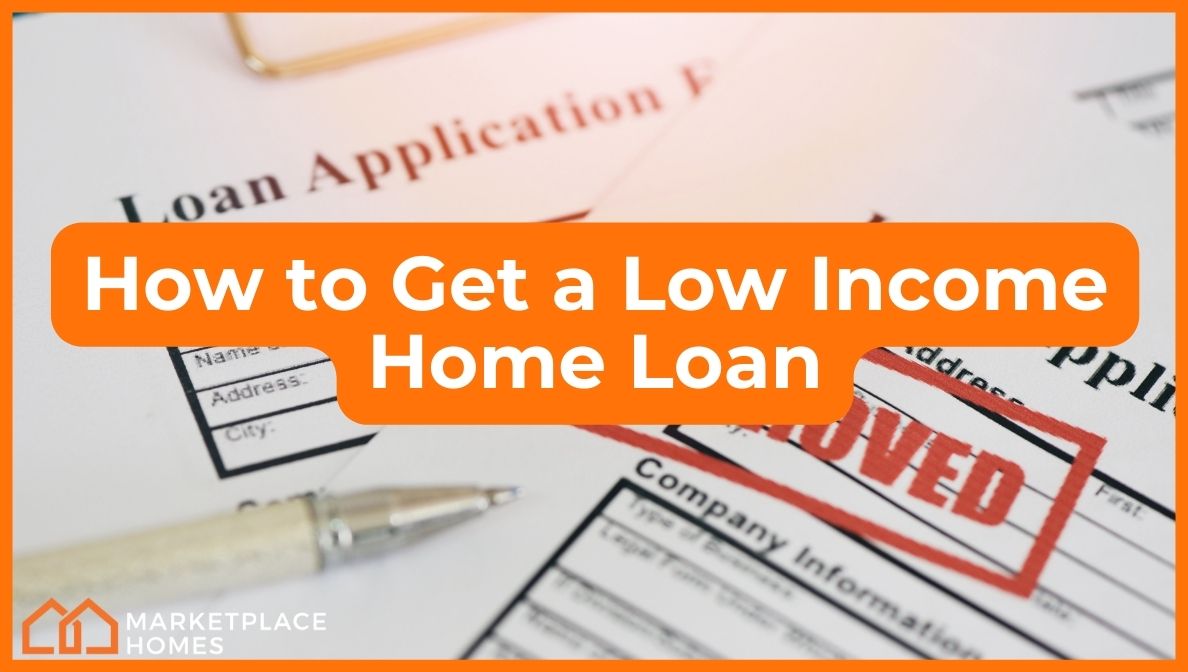Would you like to purchase a home in the future but don’t think you have enough income to qualify for a loan? You’re not alone. Many people, especially first-time buyers, ask themselves this same question.
Affordability is a common concern in 2024, as both mortgage interest rates and rental prices have gone up compared to previous years.
However, with the right preparation, you can make the dream of homeownership come true.
There are several home loan options available to people with lower incomes. These loans, coupled with extra support, can help low-income borrowers can finally get into their first homes and start building equity.
The Key to Getting a Low-Income Home Loan
When your income is low, you need to ensure two main things to get a loan:
- Qualify for a loan that requires little down. The truth of the matter is that for the average person, saving 20% down can take years, even over a decade, after many financial sacrifices. However, with some research, you can access home loans that require as little as zero down. With higher credit, you get more options too. It also helps to look for down payment assistance programs in your area.
- Look good to your lender. Spend as much time as possible to stabilize your financial profile to prove you can handle monthly payments. This will expedite the pre-approval process and open up the most possibilities.
Though it is more challenging to get a home loan with less income, it’s still possible to become a homeowner. With the right loan program, real estate agent, lender, and access to assistance programs, you can be well on your way to owning a home.
What are the common barriers low-income people face when applying for home loans?
For low-income people, the main difficulty in buying a home is saving for a large down payment. Thankfully, there are low-income home loan programs that can reduce or even eliminate the down payment requirement. These programs usually have income limits, which benefit individuals with moderate incomes. There are typically more flexible credit requirements, reduced closing costs, softer mortgage interest rates, and discounted PMI, or mortgage insurance.
Examples of loan programs that can help:
For low-income families, the best mortgage loans are going to be federally backed. This extra financial guarantee allows people with lower income and credit scores to qualify. They also offer exclusive incentives and discounts.
- VA Loan: If you’re a veteran, we appreciate your service — and so does the government. VA loans are one of the few federally-backed loans that allow 0% down. The U.S. Department of Veterans Affairs guarantees a portion of this loan to the lender to allow more favorable loan terms, like a lower interest rate.
- USDA Loan: If you’re not a veteran, USDA loans, which include Rural Development (RD) loans, can also allow you to buy a home with 0% down. There are strict qualifications for the type of home you can buy, but if you can get this loan, it will get you on the right track to homeownership without needing a down payment.
- Fannie Mae HomeReady® and Freddie Mac Home Possible® loans: Both of these federal programs require 3% down, have flexible credit qualifications, and reduced mortgage insurance. Ask your lender for more details.
- FHA Loan: This loan shares some simliarities to Fannie Mae and Freddie Mac but requires 3.5-10% down. It is still better for you than a conventional loan.
- Good Neighbor Next Door program: This program is from the U.S. Department of Housing and Urban Development (HUD). It is exclusively for full-time public service workers like teachers, emergency medical technicians, firefighters, and law enforcement. Through the Good Neighbor program, you can buy a HUD home at 50% off! All you have to do is qualify and commit to live at the home for at least 3 years.
Step 1: Talk to a lender to get a plan for your financial situation.
Financials make up the crucial foundation of qualifying for a home loan. They determine if your lender will be confident that you can keep up with mortgage payments, pay for closing costs, and potential mortgage insurance payments. This is why your first step should be to talk to a lender, like your bank. While exploring loan options, your lender will ask you many questions about financial stats like:
- Your credit score
- Monthly income
- Debt-to-income ratio (DTI)
- Your Savings
The process to get your financial profile in good standing can take a few months, years, or you may be ready right now. Your lender will give you tailored advice on how to improve your readiness as well. For example, paying off credit cards, improving your credit score, and reducing monthly bills by canceling subscriptions or finding deals on cable/internet/phone can bring you steps closer to creating a good financial profile.
When you are ready, your lender will give you a pre-qualification letter that gives your realtor the top dollar you qualify for in a house. By gaining a clear understanding of your financial situation, and eligibility requirements, you can make informed decisions that will set you up for success in the long run. This will also enable your lender to find the right type of loan for your financial situation.
Step 2: Ask your lender about the best type of loan for you.
Purchasing a home is going to look different for everyone. With so many loan options available, the right loan for someone else may not be the best one for you. For instance, if you’re a veteran, it’s wise to take advantage of VA loan options. If you’re a teacher, then check out the Good Neighbor program!
Step 3: Research down payment assistance programs in your area.
Offsetting the cost of a down payment can be a game-changer when you make an offer. Every state has its unique funding programs for people with moderate or low incomes. A simple internet search for programs in your area can give you a general idea of what is available to you.
Instead of searching nationally, target your state or community so you get more relevant results.
For example, if you’re a Virginia resident, you may be eligible for the Virginia Down Payment Assistance Program. This specific program is available to people at 80% of the area median income (AMI) while also fronting 10 to 15% of the home’s sale price, with an additional $2,500 towards closing costs. Now that is incredible help!
With a little research and some help, you can find the support you need to make your dream of owning a home a reality.
Step 4: Explore the mortgage interest tax credit.
Low-income individuals can save money after they buy a home too. Your lender can set up a mortgage interest tax credit that can help you save a significant amount of money on your taxes. It’s crucial to ask your lender about it during the home-buying process. Taking advantage of this credit can help make owning a home a little more affordable and less stressful on your wallet.
Step 5: Explore rent-to-own homes
Another path to homeownership is rent-to-own homes, which give you the option to buy after renting for a certain period. Though each contract is different, it’s possible to have portions of your rent go toward future closing costs. These agreements can be complicated, so it’s best to enter them with the advice of a real estate agent.
Low-Income Home Loans
Getting a low-income home loan requires dedication, patience, and the willingness to do research on all of your options. Your lender can help you find the best type of loan for you. Also, a realtor can help you find the right home that meets your loan’s qualifications. Whether it’s a resale home or new construction home, your realtor will ensure that you shop for what’s within your price range. With proper preparation, you can create a solid plan that will increase your chances of getting approved for a low-income home loan.
Alicia Persson is a Content Strategist SEO writer at Marketplace Homes, utilizing previous years of experience on real estate teams that specialized in investments and property management. Before she joined Marketplace Homes, she was also a freelance writer for 7 years, leading to a specialization in real estate and home living content for boutique digital marketing agencies. During her writing years, she learned the basics of SEO and gained experience writing for many different clients, making her versatile at creating diverse content.
She is a proud University of Virginia master’s graduate and enjoyed her undergraduate years at the University of Mary Washington. When Alicia is not writing, she plays keytar and sings in a local 90’s rock cover band, or she spends time with her amazing family.

